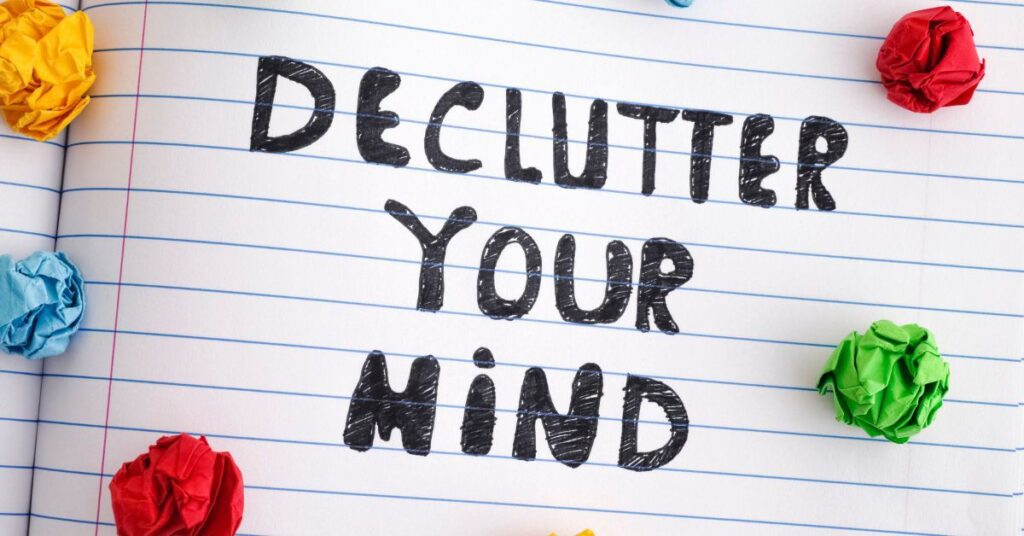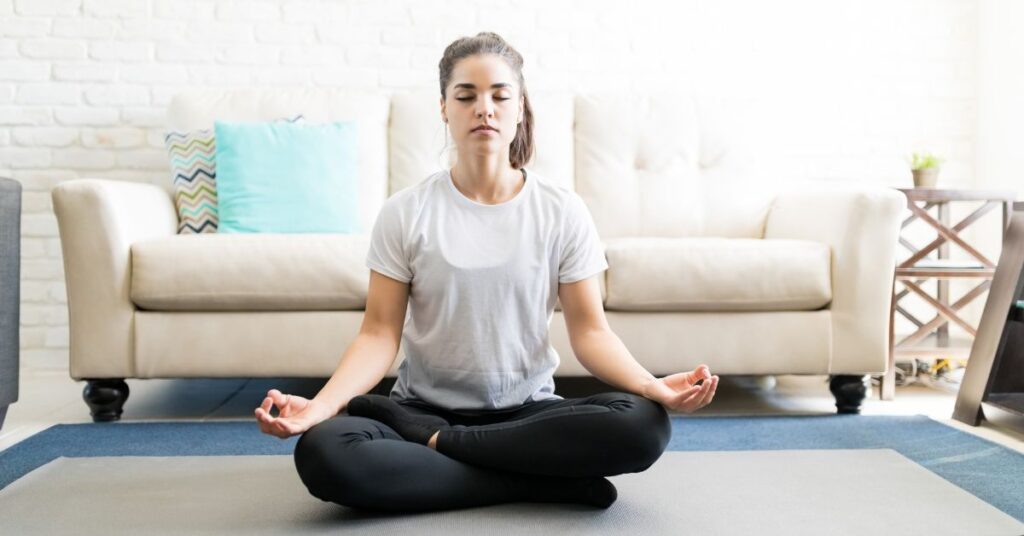Discover how zen minimalism goes beyond decluttering possessions to create profound inner spaciousness, mental clarity, and authentic contentment through mindful simplicity
Understanding Zen Minimalism
Zen minimalism represents a profound approach to simplicity that extends far beyond the popular minimalist movement’s focus on owning fewer possessions. While contemporary minimalism often emphasizes aesthetic choices and lifestyle optimization, zen minimalism cultivates a deeper relationship with simplicity that encompasses your mental landscape, emotional patterns, and spiritual well-being alongside your physical environment.
At its essence, zen minimalism is about creating space, not just in your closets and rooms, but in your mind, schedule, and heart, for what truly nourishes your authentic self and supports your deepest values. This ancient approach to simplicity recognizes that external clutter often reflects internal complexity, and that by mindfully reducing both, you create conditions for greater peace, clarity, and genuine contentment.
Unlike minimalism that might focus primarily on efficiency, productivity, or aesthetic appeal, zen minimalism emphasizes presence, awareness, and the cultivation of inner spaciousness. It’s less concerned with achieving a particular look or lifestyle and more focused on developing a quality of attention and appreciation that allows you to find richness and satisfaction in simplicity itself.
The practice of zen minimalism invites you to examine not only what you own, but how you think, what you prioritize, and where you direct your precious life energy. It offers a path to freedom from the constant accumulation—of things, experiences, information, and even spiritual practices, that can create a sense of heaviness and distraction in modern life.
This comprehensive guide will explore the principles and practices of zen minimalism, showing you how to create both external and internal simplicity that supports deeper peace, authentic joy, and meaningful engagement with your daily life.
Table of Contents

The Philosophy Behind Zen Minimalism
Beyond Material Possessions
Zen minimalism recognizes that true simplicity encompasses much more than the number of items you own or the aesthetic of your living space. While reducing physical clutter can certainly support mental clarity and emotional well-being, zen minimalism addresses the deeper sources of complexity that create stress, distraction, and dissatisfaction in your life.
This holistic approach examines your relationship with thoughts, emotions, commitments, information consumption, and even spiritual practices, recognizing that you can accumulate mental and emotional clutter just as easily as physical objects. A person might live in a perfectly minimalist apartment while maintaining a cluttered mind full of worry, judgment, comparison, and endless mental planning.
Zen minimalism invites you to notice and release unnecessary mental habits like rumination, catastrophic thinking, or constant self-criticism that create internal complexity without adding value to your experience or helping you respond more effectively to actual challenges.
The practice also extends to emotional simplicity, which involves developing a more direct and uncomplicated relationship with your feelings. Rather than layering stories, judgments, or resistance onto your emotional experiences, zen minimalism encourages you to feel what you’re feeling without adding unnecessary drama or complexity to the natural flow of human emotion.
The Principle of “Just Enough”
Central to zen minimalism is the concept of “just enough”—having exactly what you need to live well without excess that creates burden, distraction, or the need for constant management and maintenance. This principle applies to possessions, commitments, information consumption, and even personal development activities.
“Just enough” is deeply personal and varies significantly based on your circumstances, values, and life stage. For someone with young children, “just enough” toys might be quite different from someone living alone. For a professional chef, “just enough” kitchen equipment will differ from someone who rarely cooks elaborate meals.
The key is developing the awareness to distinguish between what genuinely serves your well-being and values versus what you accumulate out of habit, social pressure, fear of scarcity, or the belief that more will automatically create greater happiness or security.
This principle also applies to experiences and activities. Zen minimalism might involve choosing fewer but more meaningful experiences rather than constantly seeking novel stimulation or trying to maximize the number of activities you can fit into your schedule.
Cultivating Appreciation and Presence
Zen minimalism emphasizes deepening your capacity for appreciation and presence with what you already have rather than constantly seeking satisfaction through acquisition or achievement. This shift in attention often reveals richness and beauty in simple, ordinary experiences that you might overlook when focused on getting more or different things.
When you own fewer possessions, you can develop a more intimate and appreciative relationship with what you do have. Your morning coffee becomes more satisfying when you’re not distracted by cluttered countertops. Your favorite book becomes more meaningful when it’s not lost among dozens of unread volumes.
This quality of appreciation extends to relationships, experiences, and even challenges. Zen minimalism helps you find depth and meaning in simple interactions, quiet moments, and routine activities that might seem boring or insufficient when you’re constantly seeking more stimulation or novelty.
The practice involves regularly returning your attention to the present moment and noticing what’s actually available for appreciation right now, rather than focusing on what’s missing, what you wish were different, or what you hope to acquire in the future.

Practical Applications of Zen Minimalism
Creating Sacred Space in Your Home
Zen minimalism approaches home organization and decoration as an opportunity to create environments that support inner peace, clarity, and authentic self-expression rather than simply following aesthetic trends or maximizing storage efficiency.
The One-Thing Practice In each room or area of your home, practice keeping surfaces clear except for one meaningful object that brings you genuine joy or serves a practical purpose you use regularly. This might be a single plant on your desk, one piece of art on a wall, or one book on your nightstand that you’re currently reading.
This practice trains your attention to appreciate simplicity and helps you notice how visual clutter affects your mental state. Many people discover that they feel calmer and more focused in spaces that aren’t competing for their attention with multiple objects, colors, or textures.
Intentional Empty Space Rather than trying to fill every corner or wall with furniture, decorations, or storage solutions, zen minimalism values empty space as an essential element that allows your mind and eyes to rest. Empty space creates a sense of openness and possibility that can be just as important as the objects you choose to keep.
Consider leaving some walls bare, keeping some surfaces completely clear, or maintaining open floor space that serves no function other than creating a sense of spaciousness and calm in your environment.
Natural Elements and Textures Incorporate simple natural elements like wood, stone, plants, or water features that connect you to the natural world and create a sense of groundedness and tranquility. These elements don’t need to be expensive or elaborate—a single smooth stone, a small plant, or a bowl of water can create a focal point for contemplation and appreciation.
Choose textures and materials that invite touch and create sensory pleasure, such as soft fabrics, smooth wood, or natural fibers that feel good against your skin and create a sense of comfort and warmth in your space.

Zen Minimalism in Your Daily Routine
Simplifying Your Schedule Apply zen minimalism principles to your calendar and commitments by regularly examining which activities genuinely contribute to your well-being, values, and important relationships versus which ones you maintain out of habit, obligation, or fear of missing out.
Practice saying no to invitations, opportunities, and requests that don’t align with your current priorities or energy levels, even if they might be interesting or beneficial in some way. This creates space for deeper engagement with the commitments you do choose to maintain.
Build buffer time into your schedule rather than trying to maximize productivity by filling every available moment with activities or tasks. This spaciousness allows you to move through your day with more presence and less rushing, and provides flexibility for unexpected opportunities or needs.
Mindful Information Consumption In our information-rich culture, zen minimalism involves being highly selective about what news, social media, books, podcasts, and other content you consume regularly. Choose sources that genuinely inform, inspire, or support your growth while avoiding information that creates anxiety, comparison, or mental clutter without serving your actual needs.
Practice periods of information fasting where you deliberately avoid news, social media, or other digital content for specific periods of time, allowing your mind to settle and your attention to return to your immediate experience and environment.
When you do consume information, practice doing so mindfully and intentionally rather than as a form of distraction or habit. Set specific times for checking email, reading news, or browsing social media rather than allowing these activities to fragment your attention throughout the day.
Single-Tasking and Deep Focus Zen minimalism emphasizes giving complete attention to one activity at a time rather than attempting to multitask or constantly switch between different projects or concerns. This approach often leads to higher quality work, greater satisfaction, and reduced stress compared to scattered attention.
When you’re eating, focus completely on the experience of eating rather than reading, watching screens, or planning your next activity. When you’re having a conversation, give your full attention to listening and responding rather than mentally preparing your next comment or thinking about other topics.
This practice of single-tasking extends to mental activities as well. When you notice your mind jumping between different worries, plans, or ideas, gently return your attention to whatever you’re actually doing in the present moment.
Decluttering Your Mental Landscape
Releasing Unnecessary Thoughts Just as you might declutter your physical possessions, zen minimalism involves noticing and releasing thought patterns that create mental complexity without serving your well-being or helping you respond effectively to actual situations.
Common forms of mental clutter include repetitive worry about situations you can’t control, harsh self-criticism that doesn’t lead to positive change, comparison with others that creates dissatisfaction, and mental rehearsal of conversations or scenarios that may never occur.
Practice observing your thoughts with the same gentle awareness you might use when deciding whether to keep or donate a physical object. Ask yourself whether a particular thought pattern is useful, necessary, or contributing to your peace and clarity, or whether it’s simply mental habit that creates stress without adding value.
When you notice unnecessary mental activity, you don’t need to fight against it or judge yourself for thinking these thoughts. Simply acknowledge what’s happening and gently redirect your attention to something more useful or present-moment focused.
Emotional Simplicity Zen minimalism encourages a more direct and uncomplicated relationship with your emotions, allowing yourself to feel what you’re feeling without adding layers of story, judgment, or resistance that create additional suffering beyond the natural experience of the emotion itself.
When you feel sad, angry, anxious, or disappointed, practice experiencing the emotion as a temporary physical and energetic experience rather than immediately creating elaborate mental narratives about what the emotion means, whether you should be feeling it, or how to make it go away as quickly as possible.
This doesn’t mean becoming passive or avoiding necessary action when emotions signal that something needs attention. Rather, it means responding to emotional information with clarity and wisdom rather than reactivity and drama.
Many people discover that emotions actually move through their system more quickly and completely when they’re allowed to be present without resistance or elaboration, creating more emotional resilience and stability over time.

Zen Minimalism vs. Contemporary Minimalism
Different Motivations and Goals
While contemporary minimalism often focuses on lifestyle optimization, productivity enhancement, or aesthetic preferences, zen minimalism is primarily concerned with cultivating inner peace, present-moment awareness, and spiritual well-being through simplicity.
Contemporary minimalism might emphasize the benefits of owning fewer possessions for easier cleaning, more efficient moving, or reduced financial burden. These are certainly valuable outcomes, but zen minimalism is more interested in how simplicity affects your state of consciousness, quality of attention, and capacity for contentment.
Zen minimalism recognizes that you can practice minimalism for ego-driven reasons, to appear sophisticated, to feel superior to people who own more possessions, or to achieve a particular image or lifestyle, that actually create more internal complexity rather than genuine simplicity.
The zen approach emphasizes humility, non-judgment, and personal authenticity rather than adherence to external standards or comparison with others’ choices about possessions, lifestyle, or aesthetic preferences.
Flexibility and Non-Attachment
While some forms of minimalism can become rigid rules about how many items you should own or what your living space should look like, zen minimalism emphasizes flexibility and non-attachment to any particular approach or outcome.
The goal isn’t to achieve a specific number of possessions or a particular aesthetic, but rather to develop the awareness and wisdom to make choices that support your well-being and values in your current circumstances, which may change over time.
Zen minimalism recognizes that what serves simplicity and peace for one person might create stress or deprivation for another, and that your own needs for simplicity may vary based on your life stage, health, work requirements, or family situation.
The practice involves holding your minimalist choices lightly, remaining open to adjustment and change rather than becoming attached to a particular way of living or identity as a “minimalist person.”
Integration with Spiritual Practice
Zen minimalism naturally integrates with contemplative and spiritual practices, recognizing simplicity as a support for deeper awareness, compassion, and wisdom rather than simply a lifestyle choice or organizational strategy.
Many people find that reducing external complexity creates more space and energy for meditation, prayer, creative expression, service to others, or whatever spiritual practices resonate with their path of growth and development.
The practice of zen minimalism itself becomes a form of spiritual discipline that cultivates qualities like mindfulness, gratitude, non-attachment, and contentment that support overall spiritual development and emotional maturity.
This integration means that zen minimalism is less concerned with achieving particular external results and more focused on using simplicity as a tool for inner transformation and awakening to the richness available in each moment of ordinary life.

Overcoming Common Obstacles
Fear of Scarcity and “What If” Thinking
Many people resist simplifying their possessions or commitments because of fears about future needs or “what if” scenarios that might require items or resources they’re considering releasing.
Zen minimalism addresses these fears by helping you distinguish between reasonable preparation for likely future needs versus anxiety-driven accumulation based on unlikely worst-case scenarios or the belief that having more stuff will provide security or control over uncertain circumstances.
Practice examining your “what if” thoughts with gentle curiosity rather than immediately accepting them as valid reasons to keep items or maintain commitments. Ask yourself how likely the imagined scenario actually is, whether keeping the item would genuinely help in that situation, and what the actual cost is of maintaining possessions or commitments based on unlikely future possibilities.
Many people discover that their fears about letting go of possessions are much stronger than the actual experience of living with less, and that they feel more secure and free when they’re not managing and maintaining items they don’t actually use or enjoy.
Social Pressure and Comparison
Living with intentional simplicity can sometimes create tension with family members, friends, or colleagues who have different values around possessions, lifestyle choices, or definitions of success and comfort.
Zen minimalism emphasizes practicing your own path without judgment of others’ choices while also maintaining your authentic values and boundaries when faced with pressure to accumulate more possessions or take on additional commitments.
This might involve kindly declining gifts that don’t align with your values, explaining your choices when appropriate without trying to convince others to adopt similar approaches, and finding ways to participate in social activities that don’t require compromising your commitment to simplicity.
Remember that zen minimalism is a personal practice rather than a universal prescription, and that other people’s choices about possessions and lifestyle don’t reflect on the validity or value of your own approach to simplicity.
Perfectionism and All-or-Nothing Thinking
Some people become discouraged with zen minimalism because they expect to achieve perfect simplicity immediately or judge themselves harshly when they make choices that seem inconsistent with minimalist principles.
Zen minimalism is a practice rather than a destination, which means it’s natural and expected that you’ll continue learning, adjusting, and refining your approach over time based on what you discover about yourself and your changing circumstances.
Allow yourself to be a beginner and to make mistakes without abandoning the practice entirely. If you acquire something you later realize you don’t need, or if you find yourself accumulating mental clutter despite your intentions, treat these experiences as valuable information rather than evidence of failure.
The goal is progress and learning rather than perfection, and the most important aspect of zen minimalism is the quality of awareness and intention you bring to your choices rather than achieving any particular external standard of simplicity.
Creating Your Personal Zen Minimalism Practice
Start with Awareness
Before making dramatic changes to your possessions or lifestyle, spend time developing awareness of your current relationship with material objects, mental patterns, and daily activities.
Notice when you feel compelled to acquire new possessions and what emotions or thoughts drive these impulses. Observe how different environments affect your state of mind and energy levels. Pay attention to which activities and commitments genuinely nourish you versus which ones you maintain out of habit or obligation.
This awareness phase helps you make more conscious and effective choices about what to keep, release, or change rather than following generic minimalism advice that might not fit your particular circumstances and values.
Experiment with Small Changes
Begin your zen minimalism practice with small, manageable experiments rather than attempting to transform your entire living situation or lifestyle at once.
You might start by clearing one small surface in your home and maintaining it as a space of simplicity for one week, noticing how this affects your daily experience. Or you might experiment with single-tasking during one routine activity each day, observing how this changes your quality of attention and satisfaction.
These small experiments allow you to learn what works for your personality and circumstances while building confidence and momentum for larger changes if you choose to pursue them.
Develop Your Own Guidelines
Rather than following rigid rules about how many possessions to own or what your living space should look like, develop your own flexible guidelines based on your values, circumstances, and what you learn through experimentation.
Your guidelines might include principles like “I keep items that I use regularly or that bring me genuine joy,” “I maintain commitments that align with my core values and current priorities,” or “I choose information sources that inform and inspire rather than create anxiety or comparison.”
Allow these guidelines to evolve as you grow and change, and hold them lightly rather than using them to judge yourself or others harshly when choices don’t perfectly align with your stated principles.
For deeper insights into how zen minimalism can support your overall personal development and life balance, explore our comprehensive guide on creating personalized self-improvement plans. The simplicity and clarity that zen minimalism provides create an excellent foundation for any personal growth work you choose to pursue.
The Freedom of Zen Minimalism
Zen minimalism offers a path to genuine freedom through the cultivation of inner and outer simplicity that supports your deepest values and authentic well-being. Unlike approaches to minimalism that focus primarily on external organization or lifestyle optimization, zen minimalism recognizes that true simplicity encompasses your mental landscape, emotional patterns, and spiritual development alongside your physical environment.
The practice of zen minimalism is ultimately about creating space—in your home, schedule, mind, and heart—for what truly matters to you while releasing what creates unnecessary complexity, distraction, or burden. This spaciousness allows you to engage more fully with your life as it is rather than constantly seeking satisfaction through acquisition, achievement, or external change.
Remember that zen minimalism is a deeply personal practice that will look different for each individual based on their circumstances, values, and stage of life. The goal isn’t to achieve a particular aesthetic or lifestyle, but rather to develop the awareness and wisdom to make choices that support your peace, clarity, and authentic expression.
As you explore zen minimalism, be patient and compassionate with yourself while remaining committed to the practices that genuinely serve your well-being and growth. The simplicity you cultivate through this practice not only enhances your own life but also contributes to a more mindful and sustainable world through the quality of presence and awareness you bring to all your activities and relationships.
The art of zen minimalism is ultimately the art of living with intention, appreciation, and presence, finding richness and meaning in the simple, ordinary moments that make up the fabric of your daily experience.

Zen Minimalism Practices to Begin Today
Physical Space Practices
•Clear one surface completely and maintain it for one week
•Choose one meaningful object for each room as a focal point
•Create one area of intentional empty space in your home
•Remove items you haven’t used in the past year
Mental Simplicity Practices
•Notice and release one repetitive worry pattern
•Practice single-tasking with complete attention
•Limit information consumption to specific times
•Observe thoughts without immediately believing or acting on them
Daily Routine Simplification
•Choose three most important tasks each day
•Build buffer time between activities
•Say no to one commitment that doesn’t align with your values
•Practice eating one meal with complete awareness
Emotional Simplicity
•Feel emotions without adding mental stories
•Practice acceptance of what you cannot control
•Release the need to have opinions about everything
•Cultivate gratitude for simple, ordinary experiences
References
Kondo, Marie. “The Life-Changing Magic of Tidying Up: The Japanese Art of Decluttering and Organizing.” Ten Speed Press, 2014.
Sasaki, Fumio. “Goodbye, Things: The New Japanese Minimalism.” W. W. Norton & Company, 2017.
Suzuki, Shunryu. “Zen Mind, Beginner’s Mind: Informal Talks on Zen Meditation and Practice.” Shambhala Publications, 1970. https://www.shambhala.com/
Thich Nhat Hanh. “The Art of Living: Peace and Freedom in the Here and Now.” HarperOne, 2017.
Beck, Charlotte Joko. “Everyday Zen: Love and Work.” HarperOne, 1989. https://www.harpercollins.com/
Discover the profound freedom that comes from zen minimalism – a holistic approach to simplicity that creates space for what truly matters in both your external environment and inner landscape.
